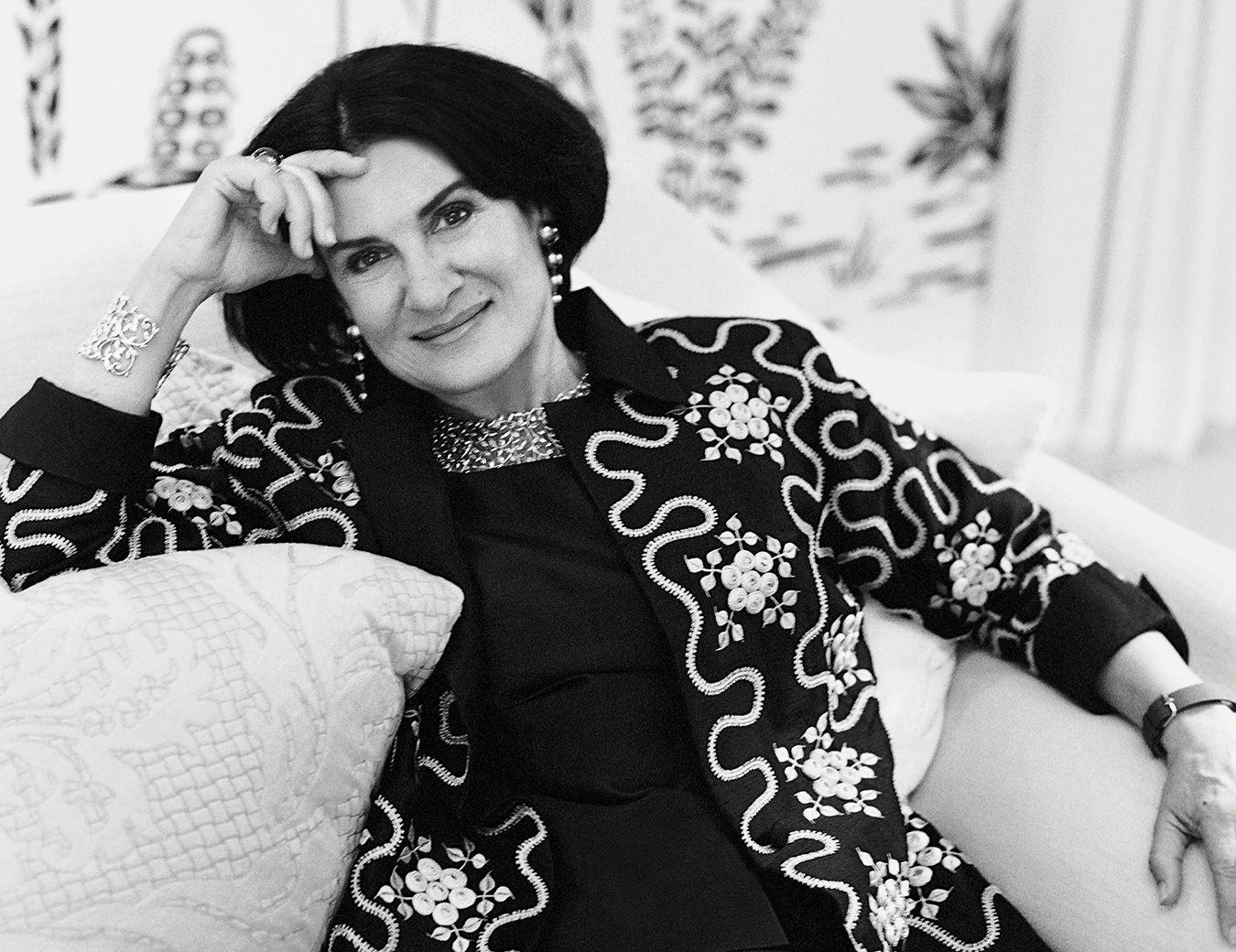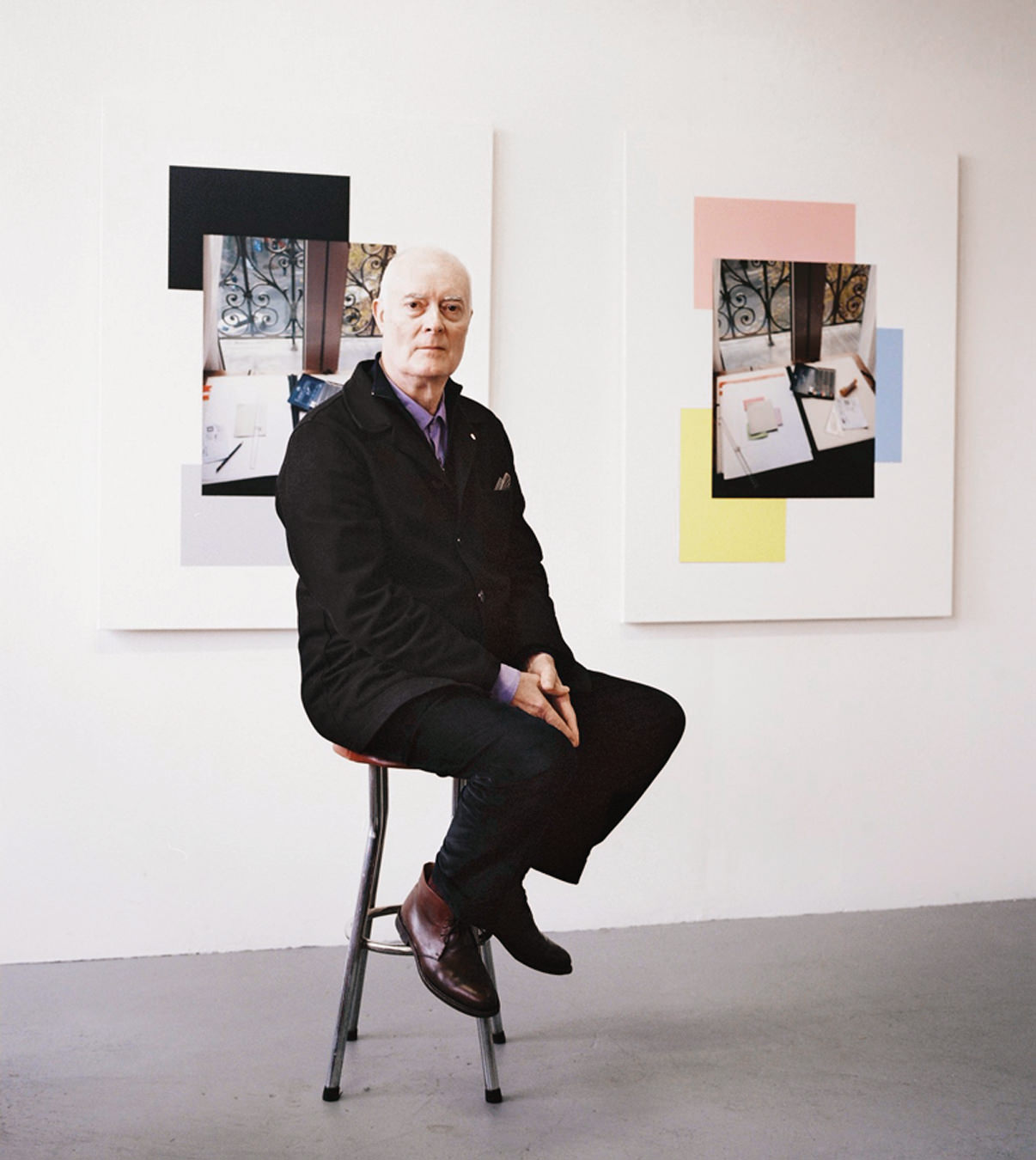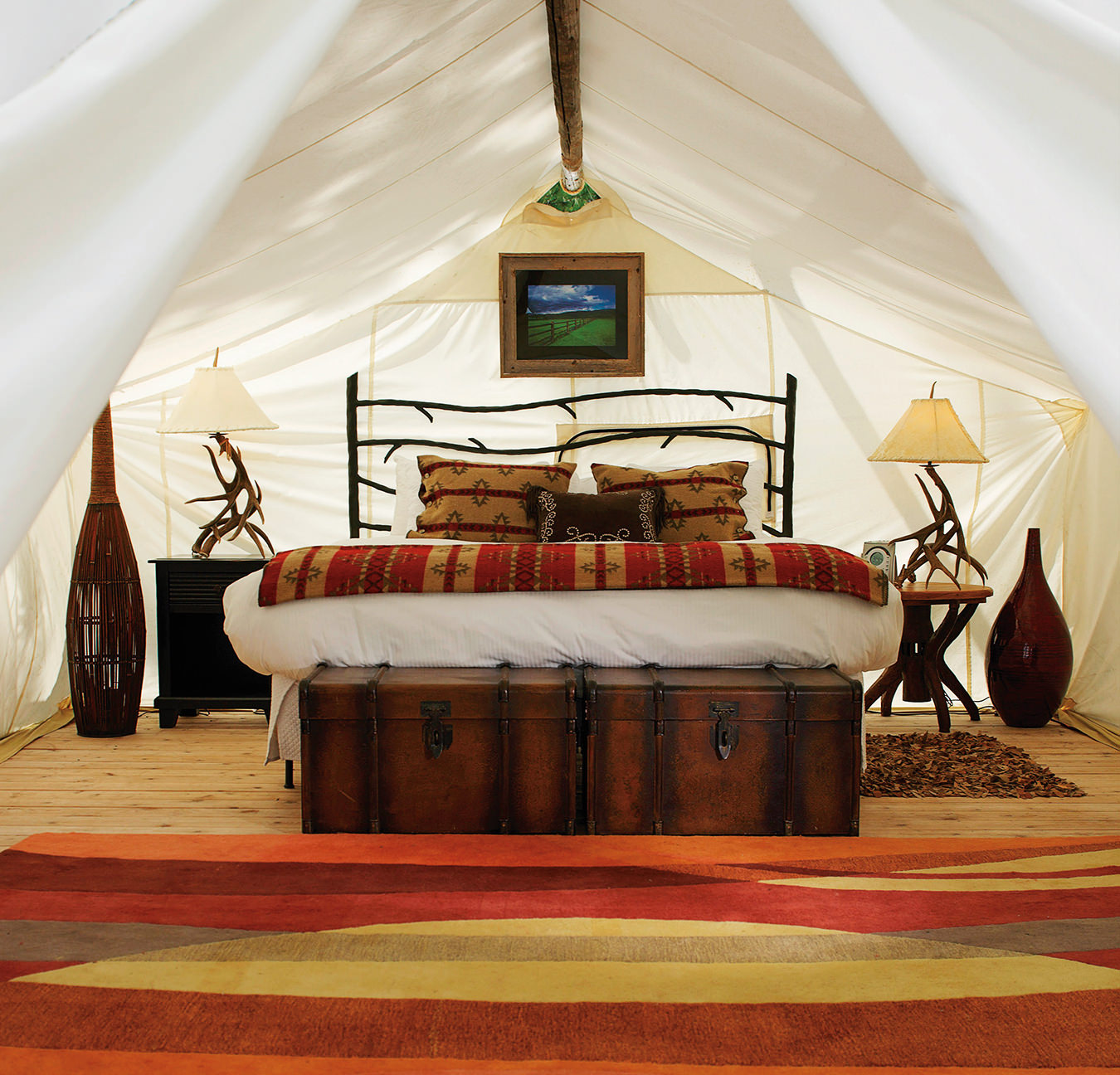5 Standout Artists at the Public Art Abu Dhabi Biennial
The evolution of Abu Dhabi may have begun with oil, but it is continuing with art. And with the launch of the emirate’s first Public Art Abu Dhabi Biennial, Abu Dhabi is luring curators, collectors, and the curious to experience its cultural offerings.
A-list architects have also left their mark on the skyline, including Zaha Hadid, Foster + Partners, Adjaye Associates, Mecanoo, and Frank Gehry.
Public Art Abu Dhabi Biennial debuted in November 2024, showcasing public art throughout the city and in the neighbouring oasis town of Al Ain. Featuring more than 70 artists from the Middle East, Europe, Asia, and South America, there were eight routes, which included popular areas where locals gather such as the National Theatre, Al Ain oasis, and the Abu Dhabi Corniche, an eight-kilometre area of beach, pathways for walking, running, and cycling, and parks, which also hosted biennial concerts and events.
Focused on the theme “public matter,” this biennial celebrated the connection between community and art, highlighted themes of migration, change, and environment, and showcased many women artists of the region. Here are five women artists who created works reflecting these themes and encouraging commentary on interactions with the evolving world around us.

Photo by Ismail Noor
Based in Karachi, Pakistan, this multidisciplinary artist and curator combines printing and illustration to reflect on home, people, and the natural world. Balagamwala, who has a bachelor’s degree from the University of Toronto and a master’s degree from Cornell University, also draws inspiration from history and colonialism as she previously worked at the Citizens Archive of Pakistan and is currently the curator of the Kurachee.pk reading room at Karachi’s AAN Art Space & Museum. Her contribution to the biennial, Other Maps and Guides, is four hand-sewn books, each with charcoal illustrations, short phrases, linocut prints, poems, and digital drawings inspired by Abu Dhabi’s people, flora, and fauna. Each book examines how Abu Dhabi lives, eats, and plays in an ever-changing environment and asks viewers how they are responding to these changes.
___
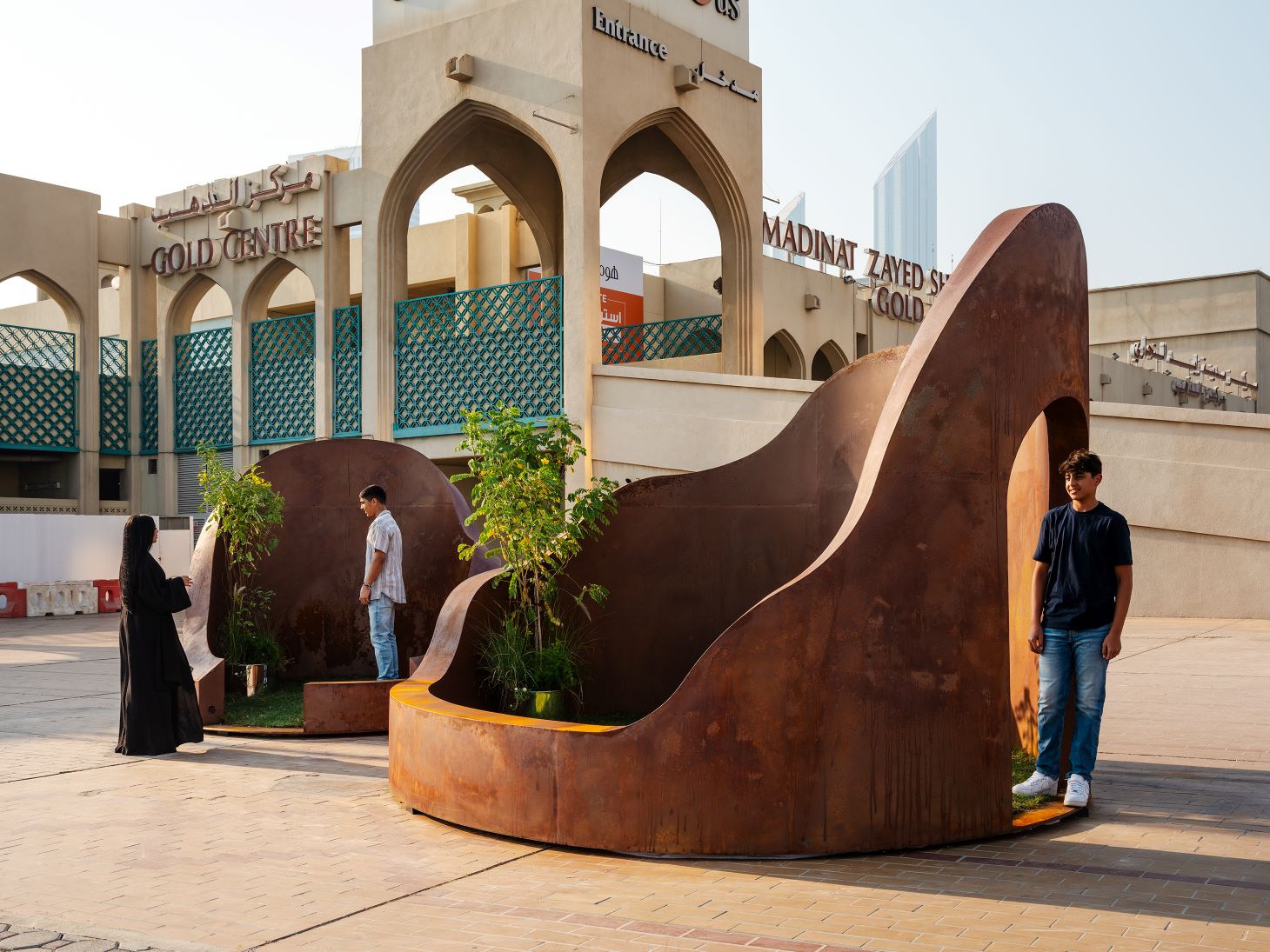
Photo by Lance Gerber
A native of Abu Dhabi, Al Qubaisi is a well-known jewellery designer, using metal and natural materials while choosing steel and stainless steel for her sculptures. She has exhibited in London, Milan, Doha, Helsinki, Cairo, and Brussels, and she has been a winner at the British Council’s Young Creative Entrepreneur Awards and the Emirates Woman of the Year Awards. Al Qubaisi’s work involves Arab motifs and traditions, such as swirls of Arabic letters and a love for horses, evoking the sensual curves found in the desert sands or in ocean waves. Her creation for the biennial, My Courtyard, is a series of organically shaped steel pods, lined with grass and plants. These structures were placed near the city’s busiest shopping mall as a place for porters and locals to rest and relax close to nature. The structures invite anyone to take a moment from a busy day to reconnect and reflect on the city.
___
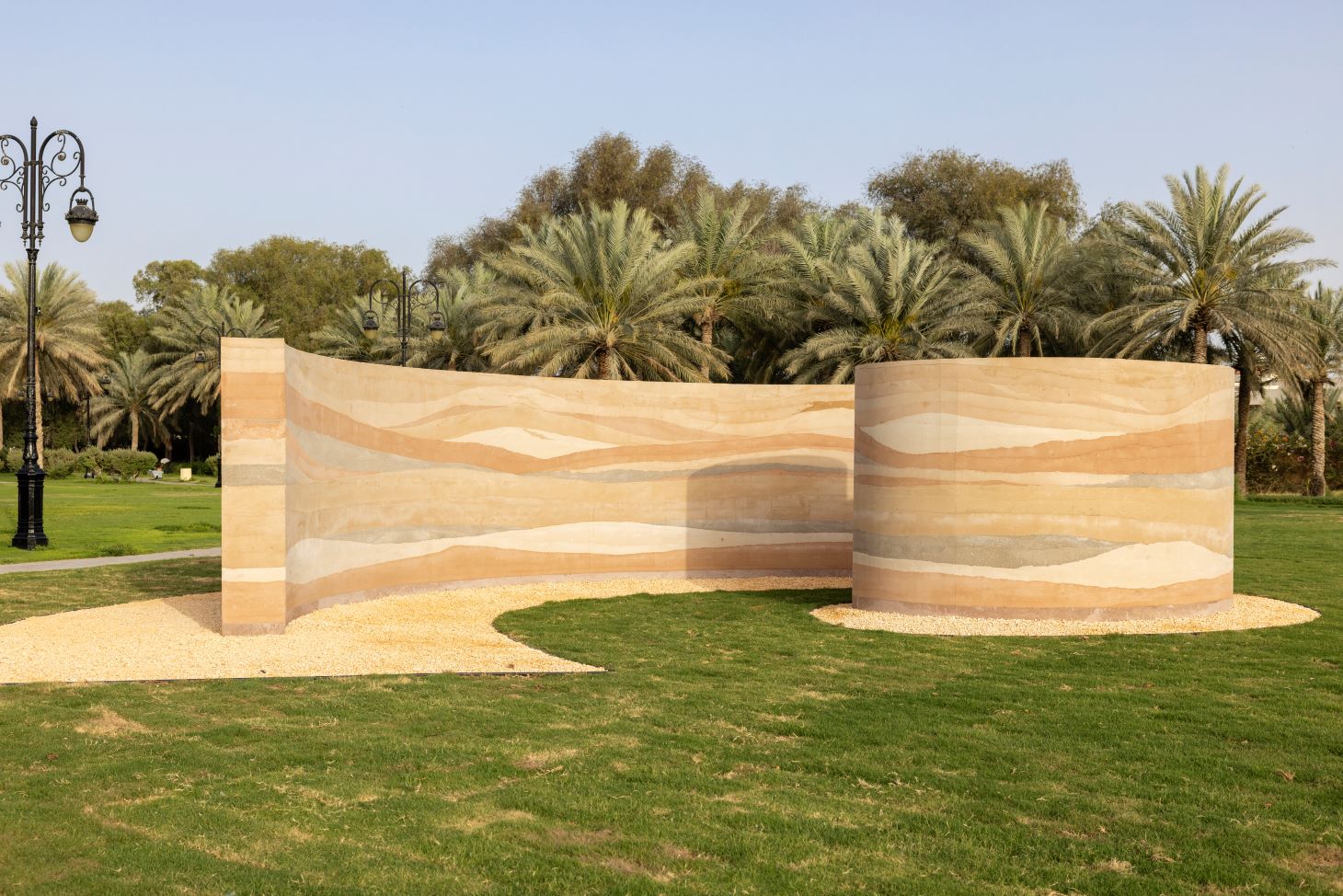
Photo by Ismail Noor
A graduate of Dubai’s Zayed University, Saeed has exhibited her work in Saudi Arabia and Kazakhstan as well as being included in the Louvre Abu Dhabi exhibition Art Here in 2021 as a finalist for the Richard Mille Art Prize. This Emirati artist prefers mixed media for installations, while her public art uses sculpture and natural materials. The rapid evolution of her home in Dubai has influenced Saeed’s work as she continues to examine relationship between land, identity, and materials as well as focusing on sustainability and environment. Her contribution to the biennial, Desert Readings, is constructed from green cement, a sustainable product made with sea water and sand sourced from the seven emirates that produces fewer carbon emissions. Each layer of the swirling sculpture evokes the movement of the sun from sunrise to sunset, emulating the constant change and those things that remain. Located in Al Ain, the large sculpture is located beside the UNESCO World Heritage site of Al Jahili Fort, a commentary on the connection between the past and present.
___
With a master’s in fine and media arts from Halifax’s Nova Scotia School of Art and Design, this Karachi-based visual artist is inspired by the urban landscape and the connection between people and city environments. Collaboration with craftsmen, artisans, and tech experts was key to her installations at the Karachi Bienalle 17, Abu Dhabi Art Fair 2018, and Pioneer Cement Residency curated by Canvas Gallery 2018. Her recent works have also commented on safety and security, with, for example, sandbags, watchtowers, and barricades. Noting the fragile environment and how humans are being affected by climate change, Nusrat’s installation for the biennial was based on her 2023 exhibition in the Sea Art Festival – Busan Biennale in South Korea. Demonstrating the effects of extreme weather events, Floating Fragments is on display in Abu Dhabi’s Corniche Lake at Lake Park, with terra cotta roof tiles appearing to be a roof submerged in the water, a reminder of the fragile ecosystem so much of the world is experiencing yet also providing a home for the birds in Lake Park.
___
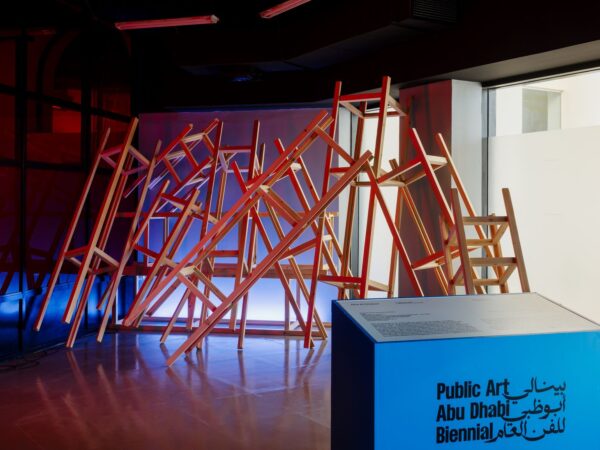
Photo by Lance Gerber
This Abu Dhabi artist mixes painting, photography, sculpture, drawing, and printmaking as well as tapping into mixed media. She has an MFA from the Rhode Island School of Design and is currently an assistant professor of visual arts at Zayed University in Dubai. Al Dhaheri had solo exhibitions at Green Art Gallery in Dubai and T+H Gallery in Boston and has participated in group exhibitions at London’s Cromwell Palace, Ghent’s Tatjana Pieters, Abu Dhabi’s Manarat Al Saadiyat and in Riyadh, Saudi Arabia. The influence of adaptation, time, and socioeconomic changes in the emirates led to her biennial exhibit, D-constructing Collective Exhaustion, created in a space at Abu Dhabi’s National Theatre. Combining light, rope, and wood, the multilevel installation paired with sound by Dario Felli and Isa Najem creates a soundscape and visual exhibit to help calm and reclaim balance between mind and body. The combination of the pattern and colour of lights with sounds produces a calming effect, helping viewers unburden themselves of daily stresses.


